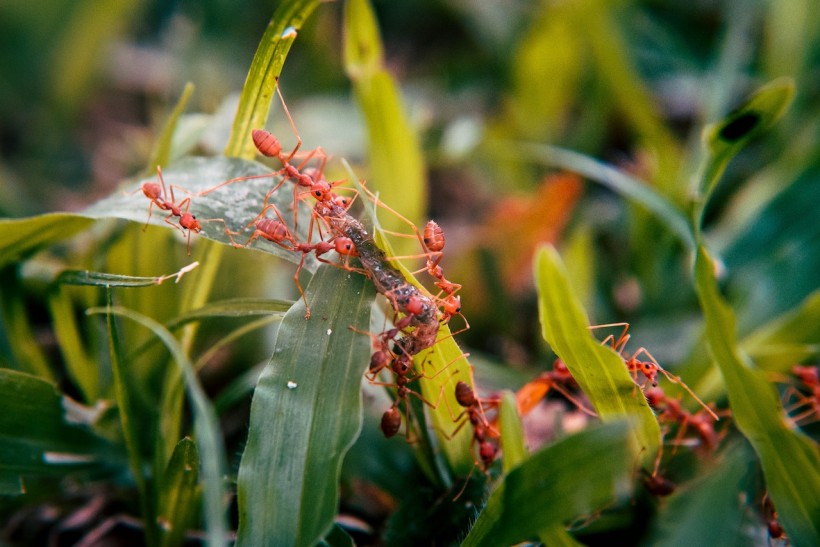Members of the animal kingdom have various strategies to carry out their life cycle successfully, sometimes at the expense of other animals. For instance, ants may be forced into life-threatening scenarios to propagate the complex reproductive process of lancet liver fluke.

Ant-Manipulation Scheme
Lancet liver fluke (Dicrocoelium dendriticum) is a flatworm that transfers between various animal species to complete its life cycle. It starts from an egg attached to the dung of grazing animals such as cattle or deer. As snails eat the infected feces, the worm larvae are dispelled as small slime balls, which ants will then eat.
The flatworm turns deadly once inside the ant. The insect usually gets multiple worms at once, most staying inside the ant's abdomen. One of the worms takes over the brain and commands the insect to seek death.
At this stage, hundreds of liver flukes could be waiting for the ant to deliver them to the next host. These flukes are wrapped in a capsule, which protects them from the stomach acid of the host. Meanwhile, the liver fluke in the brain that controls the ant dies, sacrificing itself for the others.
The infected zombie ant climbs on the blades of grasses and other vegetation, clinging to a plant by its jaws while waiting for it to be eaten by cattle. Once ingested, the flatworm can lay eggs in its new mammal host, and the cycle begins again.
READ ALSO: Why Zombie Ants Do That Thing They Do
Understanding the Mind Control Mechanism
A team of researchers from the University of Copenhagen's Department of Plant and Environmental Sciences has discovered that the ability of lancet liver fluke to control the ant's brain is even more manipulative than previously thought.
In this study, the researchers tagged hundreds of infected ants in the Bidstrup Forests near Roskilde, Denmark. It took the scientists some dexterity to glue colors and numbers into the ants' rear segments, allowing them to keep track of the insects for extended periods.
The ants were observed regarding their behavior regarding humidity, light, time of day, and temperature. It was found that temperature affected the behavior of ants. The ants get high up in the grass during the cool morning and evening hours when the cattle or deer are about to graze. When the temperature gets high, the ants let go of the grass and crawl back down to avoid the sun's deadly rays.
As explained by study co-author Brian Lund Fredensborg, this reveals that the parasite is more sophisticated than they were originally believed to be. The liver fluke is widespread in Denmark and other temperate regions worldwide. In the future, the researchers plan to continue investigating the parasite and the exact mechanism of how they take over the ant's brain. Although they know the role of temperature in determining when the parasite will take over the ant's brain, they will still try to unveil the chemical substances used by the parasite in manipulating their victim.
RELATED ARTICLE: Parasitic Fungus Engulfed Huge Spider With Spores Bursting From Its Back As Shown in Award-Winning Photo
Check out more news and information on Parasite in Science Times.



![Earth's Quasi-Moon Kamo‘oalewa Could Originate From Lunar Surface Not Asteroid Belt [Study]](https://1721181113.rsc.cdn77.org/data/thumbs/full/53275/89/56/50/40/earths-quasi-moon-kamo-oalewa-could-originate-from-lunar-surface-not-asteroid-belt-study.png)










